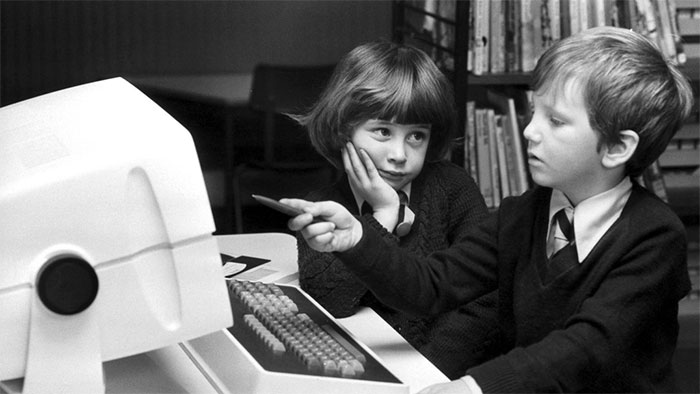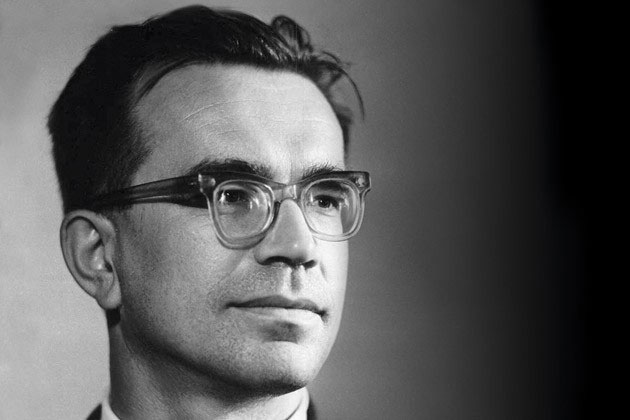'Soviet Internet', the great project never came true
Long before the World Wide Web was released, Soviet scientists thought of an entire nation-wide network to boost the economy.
Growing up in the Soviet Union in the 1980s, Oleg Guimaoutdinov understands how difficult computer use is. Although very passionate about programming, he and a few friends struggled to find a facility where the manager allowed the children to touch the computer. At that time, computers were mostly located at research institutes or universities, and managers did not like children hanging around.
Those early experiences gave Guimaoutdinov the knowledge to understand what computers do. However, that did not surprise him in the late 1980s, when he was a student at Novosibirsk, he realized that his computer could connect directly to the network in Moscow more than 3,000 km away.

Computers were a rarity in the 1980s, but the Soviet Union has considered connecting tens of thousands of computers across the country 10 years ago.
By the end of the 80s, Russia had several local area networks connected. But networks that can connect to cities thousands of kilometers away are rare.
"It's the Internet 1.0 . It's a decentralized, real-time, decentralized network with the purpose of managing all the information of the controlling economy , " says Benjamin Peters, author of a book about connectivity efforts. Soviet national network said.
Building networks for economic innovation
The "Soviet Internet" network was the attempt of mathematician Viktor Glushkov , who was regarded as the father of information science in the Soviet Union. Glushkov himself was inspired by Anatoly Kitov, who proposed the idea of connecting the entire Soviet Union in 1959.

Viktor Gluskov, one of the founders of the Soviet computer industry.
Kitov had sent a proposal to General Secretary of the Soviet Union at that time, Nikita Krushchev, but his project was not implemented. At that time, the Soviet Union had a network of computers connected to each other, but it was a network used by the military.
Victor Glushkov wants to build the network connecting Soviet computers first for economic reasons. The planned economy of the Soviet Union at that time was ineffective because the goods produced were entirely dependent on direction, not user demand, so the efficiency was very low.
Glushkov said that by connecting all computers and the phone network, data on inventory, human resources, budgets or targets can be shared with each other. From there, the Soviet State Planning Commission could monitor and adjust targets in real time. Even factories in regions can connect to each other to adjust goals.
Victor Glushkov's project, called OGAS , began construction in the 1960s. In theory, this project will collect data of all Soviet economic sectors, the size of the data is enormous. Computers from Moscow will have to connect to about 200 computers in the middle layer, thereby accessing the data of about 20,000 computers at facilities and factories across the country.

Map of OGAS computers.
By 1970, Glushkov had completed the blueprint, just waiting for submission. However, the estimated budget for this project is too large, about 20 billion rubles, equivalent to about 100 billion USD at the current exchange rate. This cost is equivalent to both the space project and the atomic bomb that the Soviet Union has done.
Besides, this network also needs about 30,000 employees to build and is a long-term plan that lasts up to 30 years. In addition, the amount of computers available at that time in the Soviet Union was not enough to build the network. These are difficulties that hinder the realization of the OGAS network.
The network turned on and off the light bulb for the chicken farm
In addition to cost reasons, the OGAS plan also worried many members of the Soviet Politburo when it gave too much power to the State Planning Committee.
When Glushkov presented his plan to the Soviet Politburo in 1970, he realized that the only two people who had supported him were General Secretary Leonid Brezhnev and the Prime Minister (Chairman of the Council of Ministers), Aleksey Kosygin, were both absent. . The two most powerful figures of the Soviet Union are on diplomatic missions.
Even without two supporters, Glushkov still presented the OGAS plan for over half an hour. Many officials such as Vice Chairman of the Council of Ministers Nikolai Baibakov or Minister of Automation Equipment Technology and Control System Konstantin Rudnev have voiced support for Glushkov.
However, Soviet Finance Minister Vasily Garbuzov argued that machines were now effectively used in chicken farms, so people should first consider adopting them on farms rather than networks. National grid to connect them together. In his book, author Ben Peters said that Mr. Garbuzov has objected since the plan was transferred to the Central Statistics Committee. If he continued, his Ministry of Finance would be inferior to power.

Map of a plan for a network of computers across the Soviet Union in 1990.
"By then, everything related to economics and the mathematical model that underpins OGAS has been brushed off," Glushkov wrote in his autobiography.
As time went on, the opinions of members of the Soviet Politburo became more and more inclined toward not implementing the entire OGAS.
"Comrades, we may be wrong to not fully implement this plan, but it is a revolution that we cannot fully understand," Glushkov recalled the words of Politburo Commissioner Mikhail Suslov. Comment. At the end of the meeting, a conclusion was made: OGAS will be transferred to a technical institute to undertake, and only study technical issues.
By April 1971, after the Congress of the Party, OGAS project was partially implemented. 1,600 automated management systems (ASUs) were installed, computer production increased by 2.6 times, and an engineering network was deployed but on a much smaller scale than what OGAS had proposed.

The Soviet "BESM1" supercomputer in the 1950s was capable of performing 10,000 calculations per second.This is the recommended computer to connect to the OGAS network.
For the next 12 years, Glushkov still tried to push this project to achieve what he expected and become more popular. However, due to many reasons such as the unmet ability of computers, the complexity of the Soviet economy, OGAS never achieved the potential that Glushkov had thought of. Even so, until his death in 1983, Glushkov still considered this to be the greatest work of his life.
After Glushkov died, many other figures like computer scientist Mikhail Botvinnik or Vladimir Kitov also tried to take this project to higher levels to deploy, but that effort did not go anywhere. Just a few years later, the World Wide Web, developed from the American Arpanet, was born. This invention completely changed the way people connect with each other.
"Soviet Internet" is a great idea, but forever impossible to become a reality. Anatoly Kitov, Victor Glushkov or Mikhail Botvinnik all envision a future in which connectivity plays an important role. However, they could not create that future by themselves.
- Father of the Soviet-Soviet atomic bomb
- SpaceX launches satellite Internet, testing the global Internet broadcasting project
- Decode national secret projects about UFOs
- Google canceled drone internet broadcast project
- Confidential records of Soviet supernatural phenomena
- There will be satellite Internet coverage around the world
- Why did the Soviet Union abandon the supreme Buran spacecraft project of America?
- 5 symbolic weapons of Soviet defense
- Project Loon is ready to provide Internet speed of 15 Mbps
- Traces of the former Soviet Union's Buran space project
- NASA's Internet speed rumor reaches 91 Gb / s, is it true to download movies in 1 second?
- Low-cost satellite Internet for the poor
 What is the Snapdragon SiP chip?
What is the Snapdragon SiP chip? How to create a yellow circle around the mouse cursor on Windows
How to create a yellow circle around the mouse cursor on Windows Edit the Boot.ini file in Windows XP
Edit the Boot.ini file in Windows XP 3 ways to restart the remote computer via the Internet
3 ways to restart the remote computer via the Internet The tragic death of a Soviet astronaut falling from space
The tragic death of a Soviet astronaut falling from space  Sputnik and the code that the Americans could not decode
Sputnik and the code that the Americans could not decode  What top American secrets have been made public?
What top American secrets have been made public?  83.6kg metal sphere makes the US 'wake up': Beep beep scares White House officials
83.6kg metal sphere makes the US 'wake up': Beep beep scares White House officials  Why has the Soviet Union never been to the Moon?
Why has the Soviet Union never been to the Moon?  Discover the secret bases of the Soviet Union
Discover the secret bases of the Soviet Union 